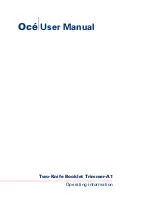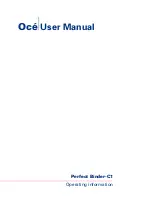AR0331
26
SENSOR READOUT
Image Acquisition Modes
The AR0331 supports two image acquisition modes:
•
Electronic rolling shutter (ERS) mode:
This is the normal mode of operation. When the
AR0331 is streaming, it generates frames at a fixed
rate, and each frame is integrated (exposed) using the
ERS. When the ERS is in use, timing and control logic
within the sensor sequences through the rows of the
array, resetting and then reading each row in turn. In the
time interval between resetting a row and subsequently
reading that row, the pixels in the row integrate incident
light. The integration (exposure) time is controlled by
varying the time between row reset and row readout.
For each row in a frame, the time between row reset
and row readout is the same, leading to a uniform
integration time across the frame. When the integration
time is changed (by using the two-wire serial interface
to change register settings), the timing and control logic
controls the transition from old to new integration time
in such a way that the stream of output frames from the
AR0331 switches cleanly from the old integration time
to the new while only generating frames with uniform
integration. See “Changes to Integration Time” in the
AR0331 Register Reference.
•
Global reset mode:
This mode can be used to acquire a single image at the
current resolution. In this mode, the end point of the
pixel integration time is controlled by an external
electromechanical shutter, and the AR0331 provides
control signals to interface to that shutter.
The benefit of using an external electromechanical shutter
is that it eliminates the visual artifacts associated with ERS
operation. Visual artifacts arise in ERS operation,
particularly at low frame rates, because an ERS image
effectively integrates each row of the pixel array at a
different point in time.
Window Control
The sequencing of the pixel array is controlled by the
x_addr_start, y_addr_start, x_addr_end, and y_addr_end
registers.
Readout Modes
Horizontal Mirror
When the horiz_mirror bit (R0x3040[14]) is set in the
read_mode register, the order of pixel readout within a row
is reversed, so that readout starts from x_addr_end
+
1 and
ends at x_addr_start. Figure 24 shows a sequence of 6 pixels
being read out with R0x3040[14] = 0 and R0x3040[14] = 1.
Figure 24. Effect of Horizontal Mirror on Readout Order
G0[11:0] R0[11:0] G1[11:0] R1[11:0] G2[11:0] R2[11:0]
R2[11:0] G2[11:0] R1[11:0] G1[11:0] R0[11:0]
G3[11:0]
LINE_VALID
horizontal_mirror = 0
horizontal_mirror = 1
D
OUT
[11:0]
D
OUT
[11:0]
Vertical Flip
When the vert_flip bit (R0x3040[15]) is set in the
read_mode register, the order in which pixel rows are read
out is reversed, so that row readout starts from y_addr_end
and ends at y_addr_start. Figure 30 shows a sequence of 6
rows being read out with R0x3040[15] = 0 and R0x3040[15]
= 1.
Figure 25. Effect of Vertical Flip on Readout Order
Row0[11:0] Row1[11:0] Row2[11:0] Row3[11:0] Row4[11:0] Row5[11:0]
Row5[11:0] Row4[11:0] Row3[11:0] Row2[11:0]
FRAME_VALID
vertical_flip = 0
vertical_flip = 1
Row1[11:0]
D
OUT
[11:0]
D
OUT
[11:0]
Row6[11:0]
Row2[11:0]


















